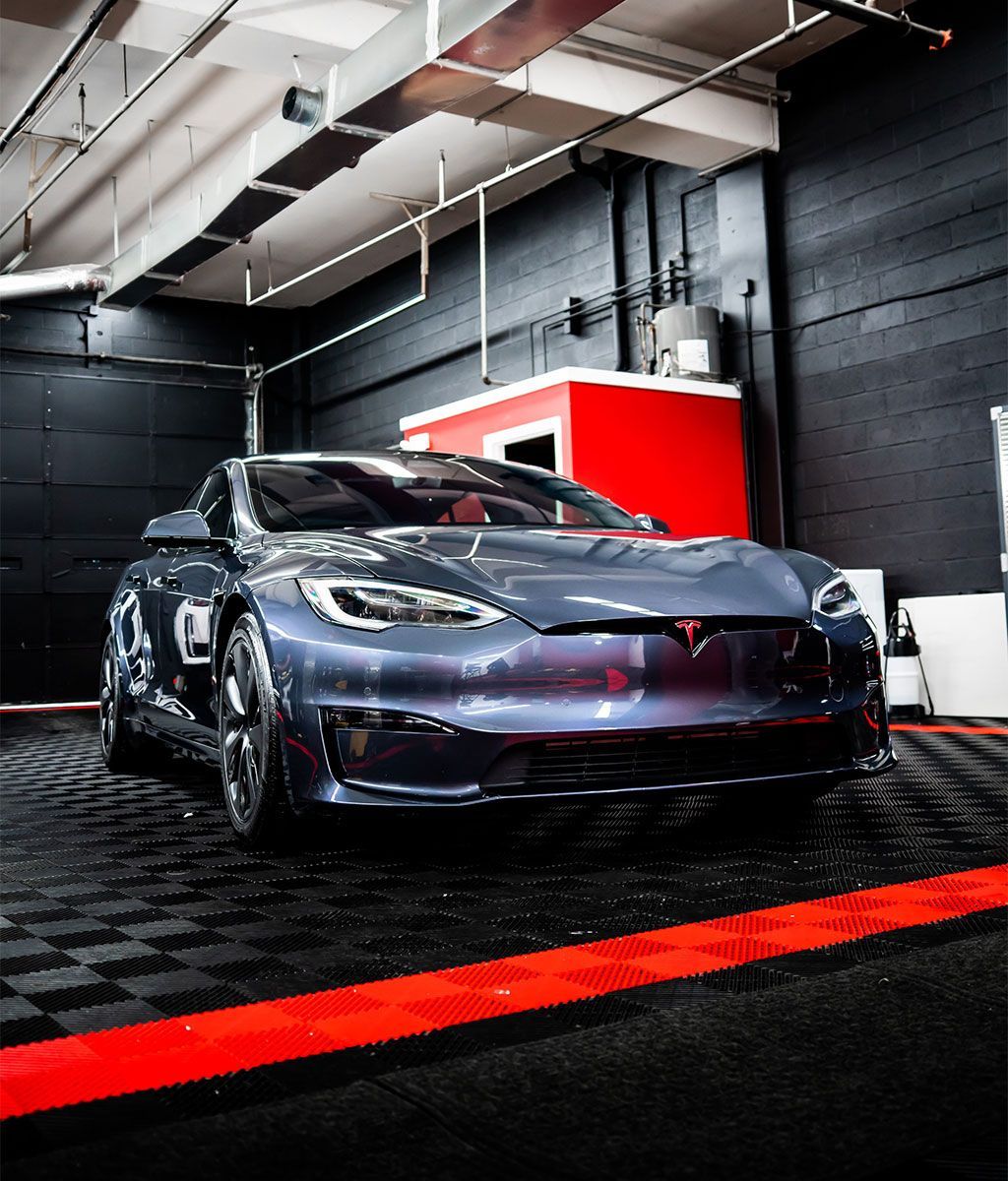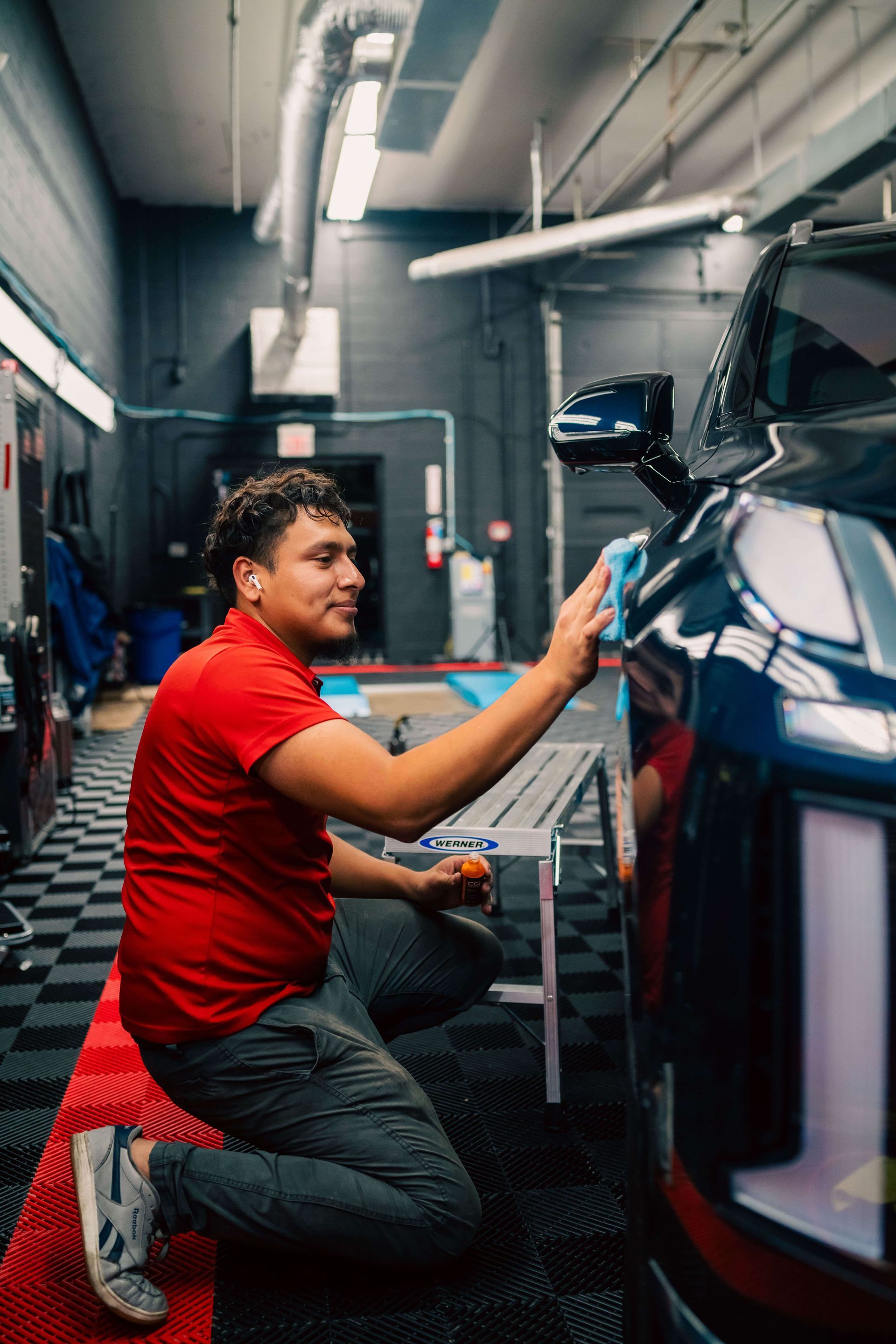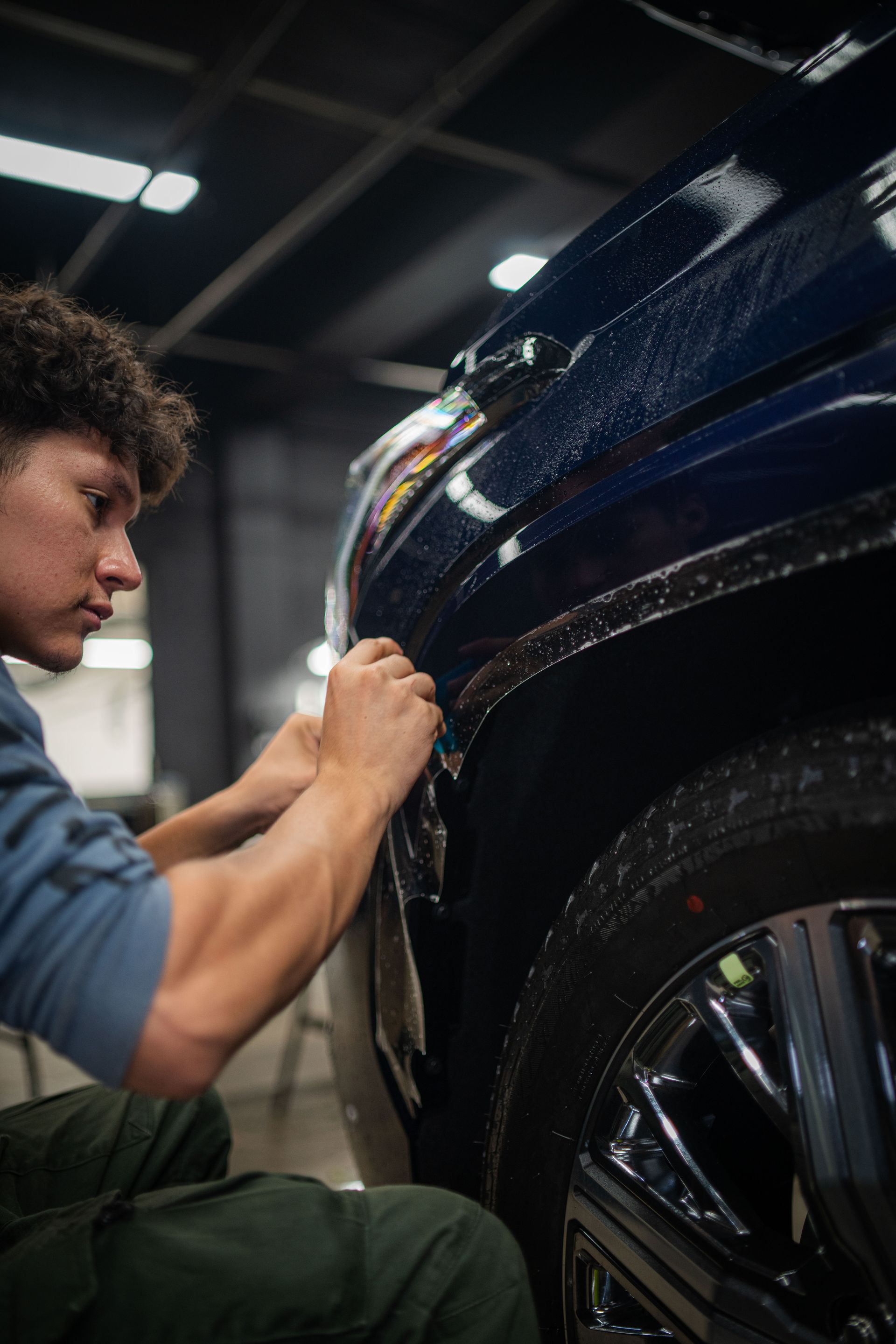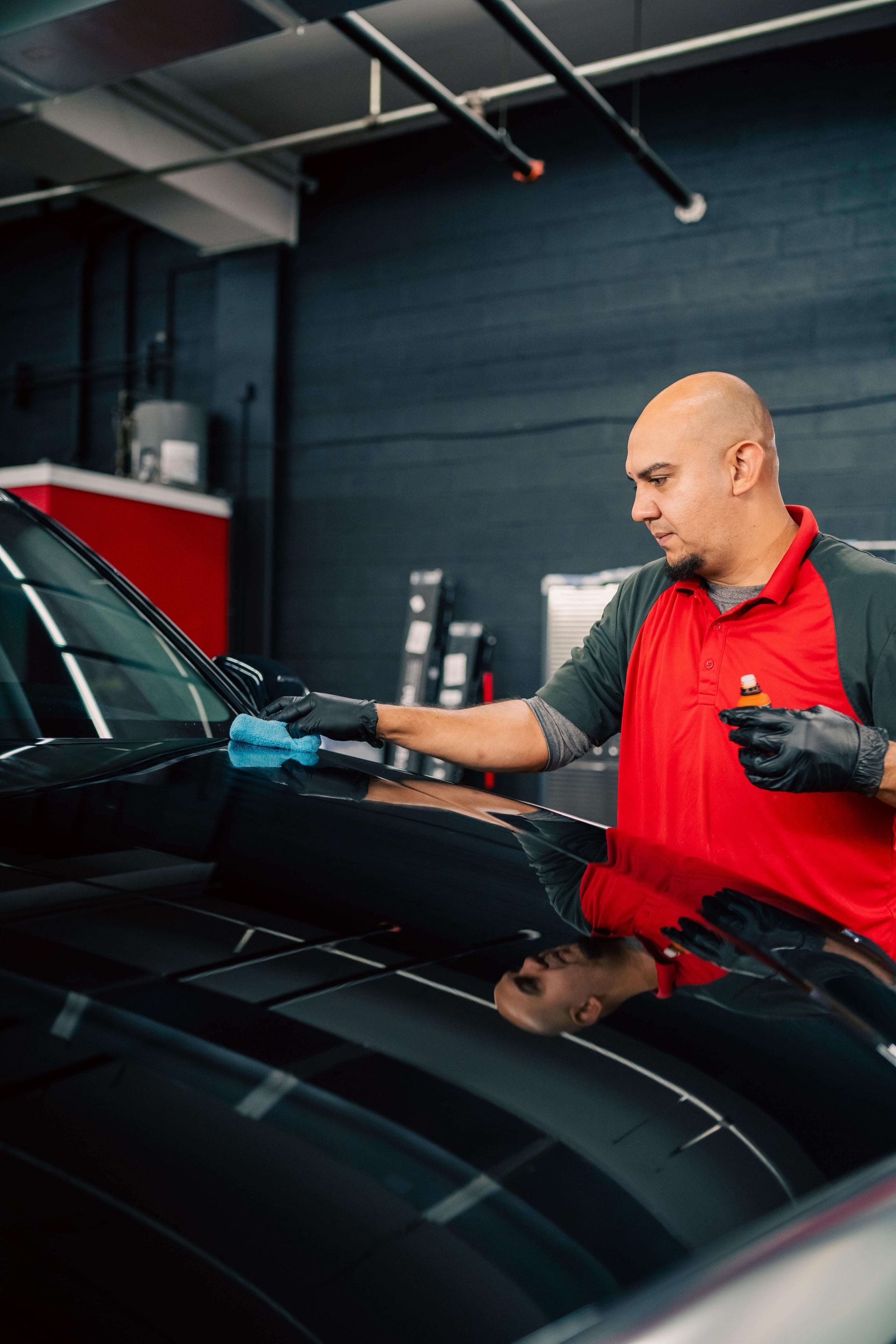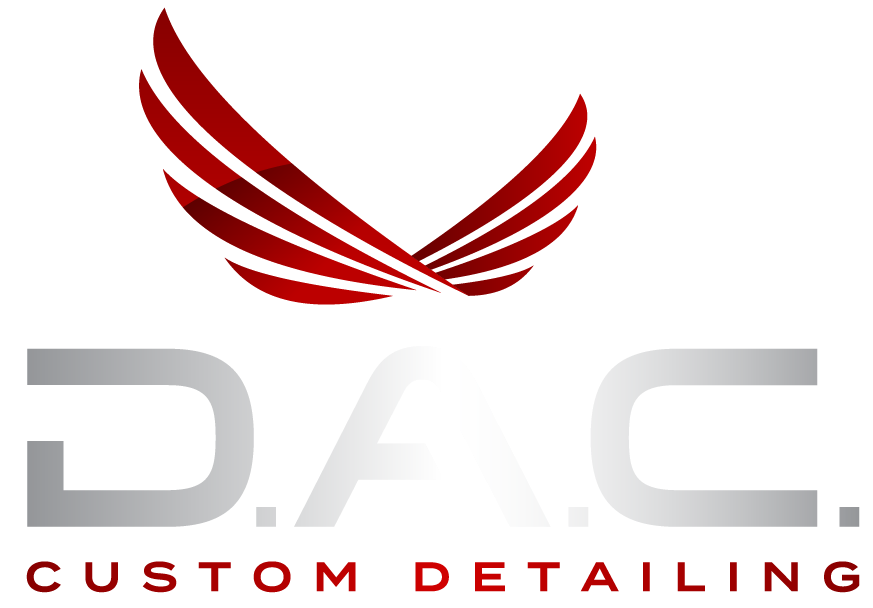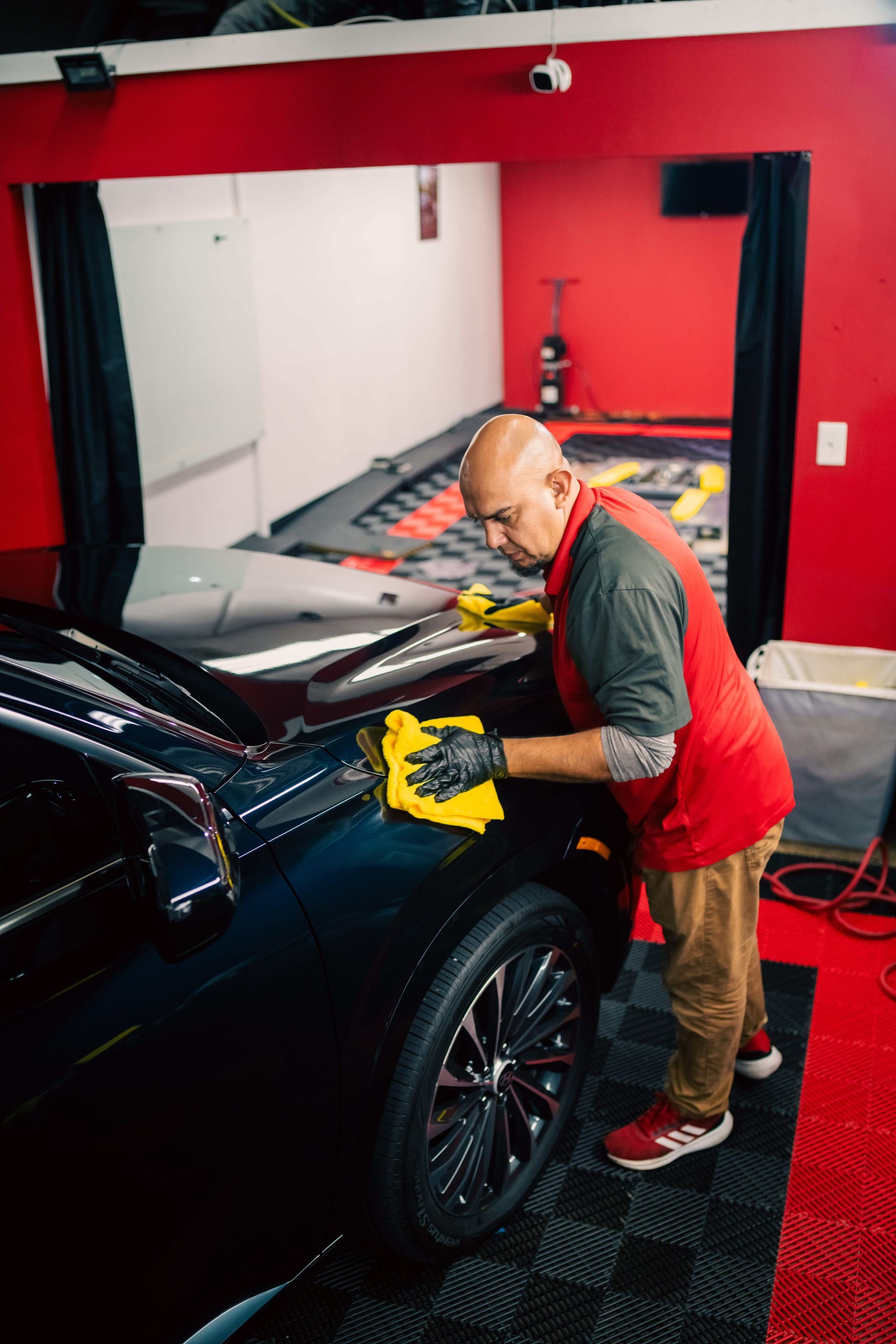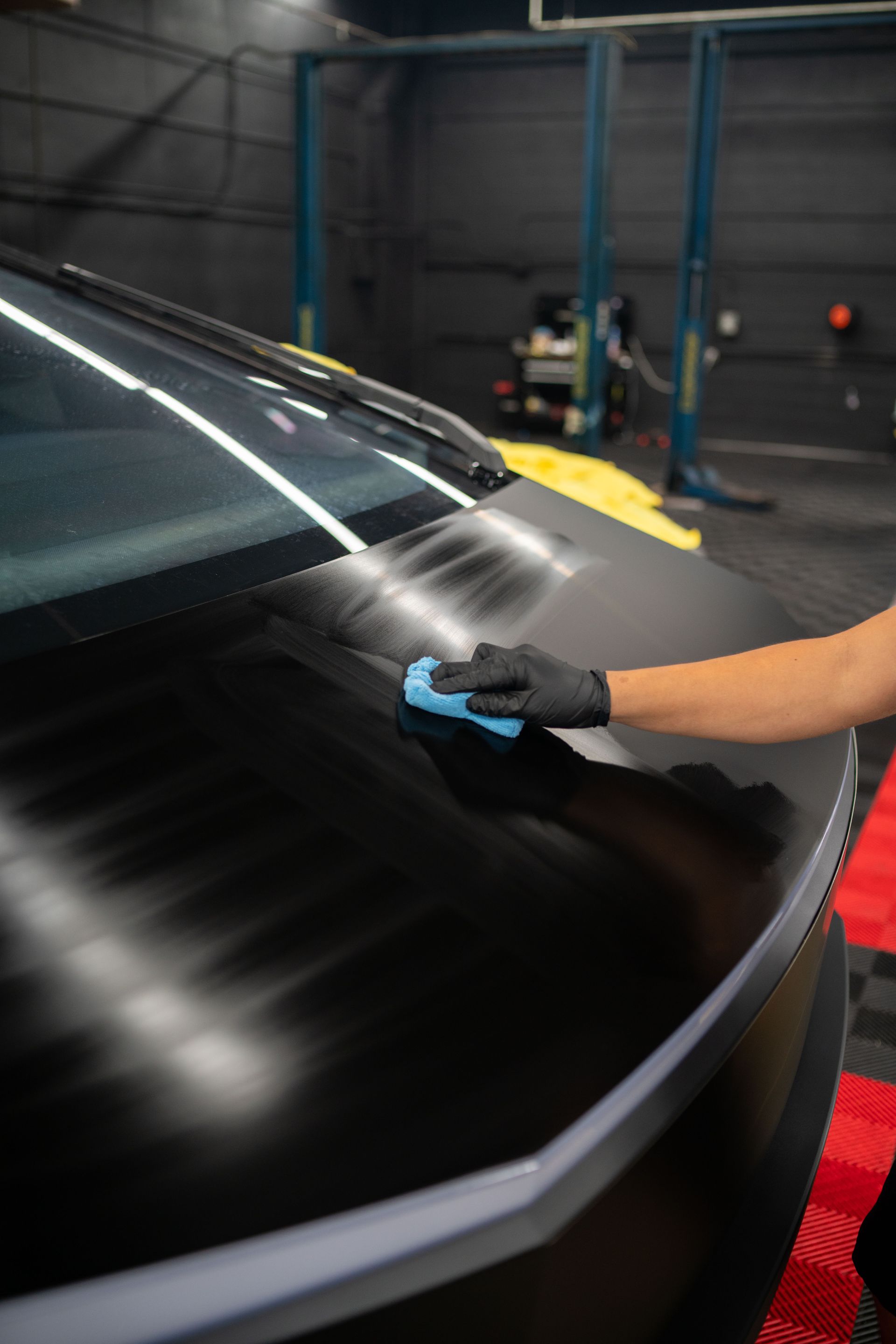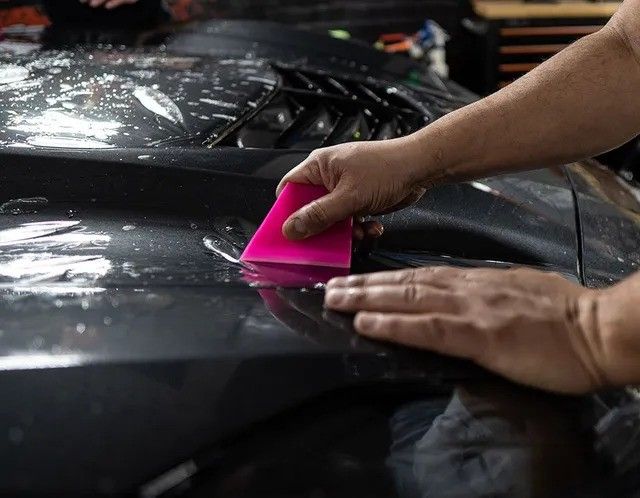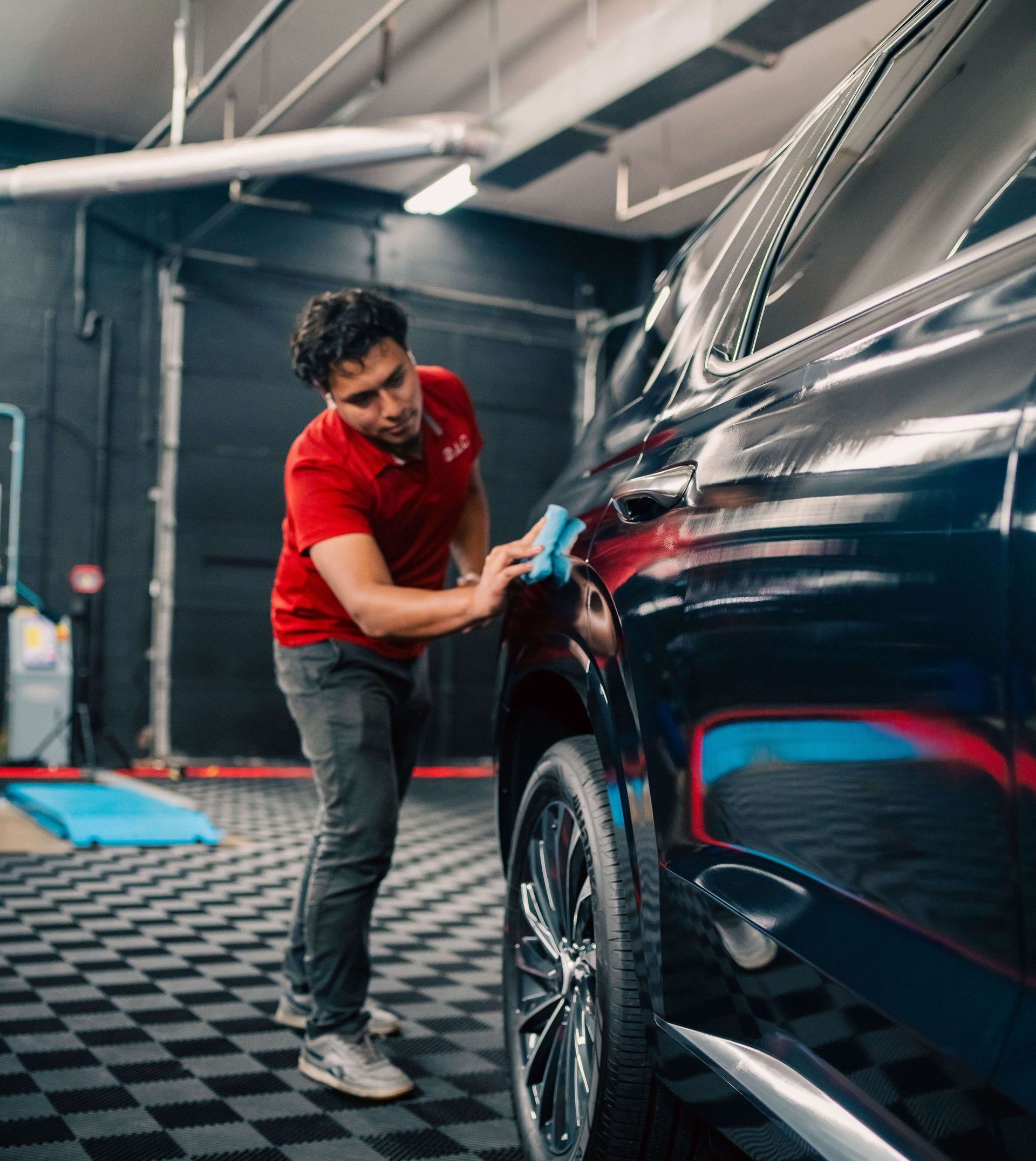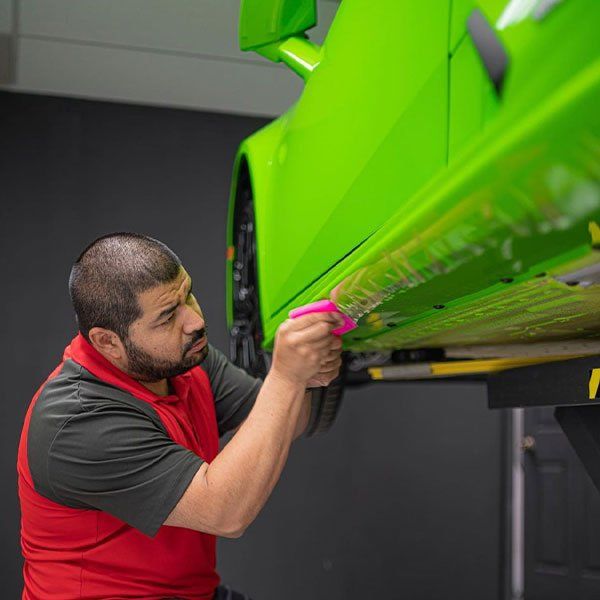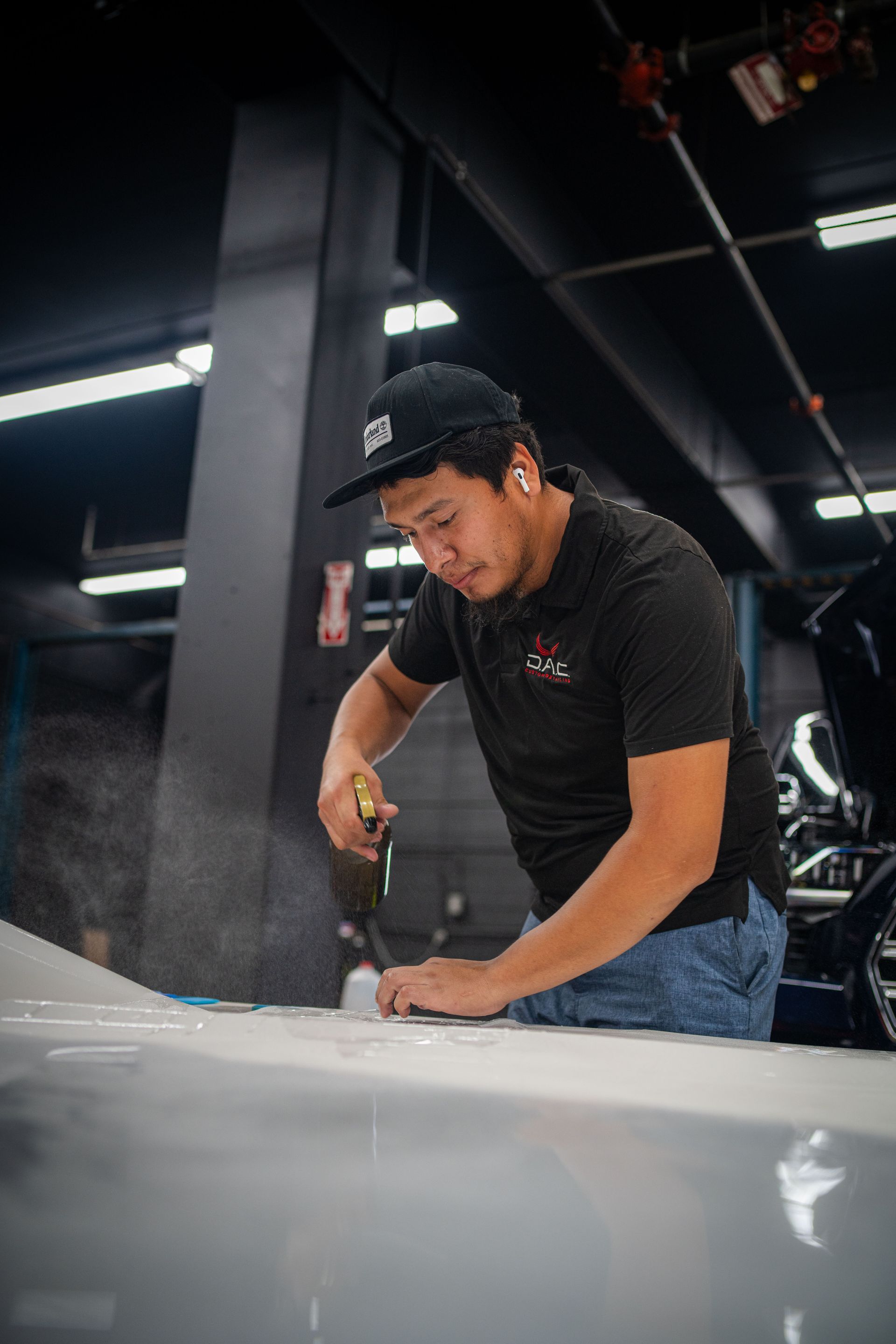REVIVE, PROTECT, MAINTAIN
When it comes to selling your car, every detail counts. Picture this: you walk into a car dealership and see two similar vehicles side by side—one is glossy and radiant, while the other looks worn and faded. Which one are you more likely to consider? That’s where ceramic coatings come into play. These advanced protective solutions not only keep your car looking sharp but also play a significant role in boosting its value when it’s time to sell it.
Ceramic coatings enhance the resale value of vehicles by providing superior protection against environmental damage, such as UV rays and dirt, while also maintaining a glossy finish that improves curb appeal. This commitment to vehicle maintenance can make your car more attractive to potential buyers and may lead to quicker sales at higher prices.
Ceramic Coatings: What Are They?
Ceramic coatings are not just any ordinary protection for your vehicle; they're an advanced liquid polymer solution that bonds chemically with the paint on your car. Imagine a second skin for your vehicle, almost like a shield, offering superior resistance against the hazards of the outside world. This means that when you invest in a ceramic coating, you're ensuring that your car is fortified against the aggressive elements it encounters daily.
Key Components of Ceramic Coatings
At the heart of these coatings are silicon dioxide (SiO2) and sometimes titanium dioxide (TiO2), which form a durable barrier on the surface of your vehicle. These materials provide a protective layer that enhances durability and longevity, setting them apart from traditional waxes. Unlike wax, which wears away after a few washes, ceramic coatings can last several years with proper maintenance, making them a smart long-term investment for car owners. The primary function of ceramic coatings goes beyond just aesthetics; they serve as robust shields against environmental contaminants like harsh UV rays from the sun, acidic bird droppings, tree sap, and road grime—all the things that can dull or damage your vehicle's finish over time.
Application Process
To achieve optimal application of ceramic coating, there are several crucial steps involved:
- Preparation: It’s vital to wash your vehicle thoroughly to remove any dirt, wax, or contaminants that could interfere with adhesion. Skipping this step might lead to an uneven finish or reduced effectiveness.
- Application: Using a microfiber cloth—gentle yet effective—the technician applies the coating in manageable sections. This careful approach allows even distribution and ensures every part of your car receives protection.
- Curing: After application, it’s essential to allow the coating to cure properly—this can take up to 24 hours, during which time the vehicle should remain untouched. This curing process maximizes bonding between the paint and the coating, ensuring long-lasting durability.
Understanding how these coatings are made and applied highlights their impressive protective qualities and empowers you as a vehicle owner. Considering ceramic coatings presents an appealing strategy for enhancing resale value while safeguarding your automotive investment in more ways than one.
Key Benefits for Your Vehicle
Ceramic coatings offer a myriad of advantages, but they primarily focus on protection and enhancing the aesthetic appeal of your car.
- UV Protection: One significant benefit is their UV protection. The coating acts as a formidable barrier against harmful UV rays, effectively preventing oxidation and fading of your vehicle's paint. This means that your car will look newer for longer, reducing concerns about costly paint repairs or touch-ups from sun damage. Without adequate protection, UV rays can cause paint to degrade and lose its vibrant color over time. Imagine a beautiful red car gradually turning into an old, dull shade due to prolonged exposure. This discoloration not only affects aesthetics; it undermines the overall value of the vehicle—something nobody wants when it’s time to sell.
- Hydrophobic Properties: The hydrophobic nature of these coatings allows water to bead up and roll off easily. As this occurs, dirt and grime are pulled along with it, lessening the need for constant washes. Washing your car becomes quicker; instead of extensive scrubbing, just a light rinse often suffices. Vehicles equipped with ceramic coatings retain their shine 70% longer than those without. This statistic showcases how effective these coatings are in maintaining that showroom finish—a trait that potential buyers greatly appreciate. Closely related is the enhanced gloss that ceramic coatings provide.
- Enhanced Gloss: Beyond protection and ease of cleaning, ceramic coatings impart a deep, glossy shine to vehicles. This gloss doesn’t merely add superficial allure; it significantly enhances your car's appearance on the road. A vehicle gleaming with rich luster stands out over dull-painted ones during resale negotiations because first impressions matter immensely in the market context. It’s this captivating appearance that initially attracts interested buyers—and can even lead them to pay more.
Accumulating these benefits positions your vehicle as an attractive investment not only for yourself but also for potential future buyers.
How Coatings Boost Resale Value
Ceramic coatings not only protect your vehicle but also elevate its appeal to potential buyers, creating a powerful impression of care and maintenance.
Market Perceptions
When you invest in a ceramic coating, it sends a clear message: this vehicle has been treated with respect, which enhances its attractiveness. Buyers looking for second-hand vehicles often pay close attention to the condition of the paint job; a shiny, well-preserved finish can be the difference between a sale or walking away. It's more than just aesthetics—it's about instilling confidence that the car has been well cared for throughout its life. Think about the last time you browsed for a used car. You may have felt more inclined to reach out for a vehicle that looked like it had just rolled off the showroom floor rather than one with faded paint and visible scratches. This is why providing a glossy exterior through ceramic coatings dramatically shifts buyer perceptions. The smoother appearance created by these coatings fills microscopic imperfections in the surface of your car's paint, enabling it to catch light beautifully and appear more vibrant.
Financial Investment
Some argue that the high initial cost of ceramic coatings, which can range from $500 to $2000, might not be worth it at first glance. However, think of this upfront payment as an investment rather than an expenditure. Yes, it’s significant, yet the long-term returns through increased resale value can often justify this cost many times over. Consider how they retain your vehicle's condition despite age and mileage. Vehicles typically lose value as they age and accumulate wear from daily usage; however, ceramic coatings serve as a shield against oxidation and environmental contaminants like bird droppings and tree sap. Using reliable ceramic coatings helps mitigate natural wear and tear visually as miles accumulate on your odometer. Proper maintenance and protective measures such as ceramic coatings lead not only to preserving aesthetic quality but also maintaining and enhancing value over time—values that become evident during resale negotiations.
Considering these aspects highlights the tangible benefits of enhanced protection and preservation that keep vehicles in prime condition while increasing their market value.
Longevity and Durability Explained
One of the major selling points of ceramic coatings is their long-lasting nature. High-quality ceramic coatings form a chemical bond with your vehicle's paint, creating a protective layer that withstands the elements far better than traditional waxes or sealants. Thanks to advancements in technology, it's common for premium ceramic products to offer an impressive lifespan—some lasting between 7 and 10 years under the right conditions. This means fewer frequent applications and, ultimately, cost savings. While high-quality ceramic coatings typically last between 2 and 5 years, some premium offerings can extend protection significantly longer. Think of it as investing in a high-quality shield for your car's exterior, one that not only defends against dirt and grime but also helps maintain that showroom shine.
Durability Factors
The durability of ceramic coatings doesn't happen by chance; several factors can affect how long this protective barrier lasts.
- Quality of Product: Not all ceramic coatings are created equal. Premium brands generally provide better longevity, so it’s worth investing in a reputable product.
- Surface Preparation: Thorough cleaning and decontamination of the vehicle’s surface is critical for enhancing the bond’s adherence to the paint. Any residual dirt can compromise how long the coating lasts.
- Application Skill: The method used during application can make all the difference. A professional applying the coating ensures it is laid down evenly, leading to optimal performance.
By prioritizing these key factors, you position yourself to enjoy a resilient and long-lasting coating on your vehicle. Regardless of the quality and application, maintaining that pristine condition is essential for maximizing benefits.
Maintenance Tips for Coated Cars
One of the remarkable aspects of ceramic coatings is their ability to maintain a vehicle's stunning appearance with only minimal effort from owners. However, while they significantly reduce the frequency of washes, it’s crucial to engage in occasional maintenance to extend their longevity and overall effectiveness.
- Washing Frequency: Ideally, aim to wash your coated car every two weeks. Using a specialized pH-neutral car shampoo will ensure you do not strip away the ceramic coating during the wash. A good pH-neutral soap acts like fertilizer—keeping your coating lush and effective without disrupting its integrity. If you notice dirt accumulation sooner due to environmental conditions, don’t hesitate to give it a light wash even before the two weeks are up. Moreover, keeping an eye on what products you use during washing can make a significant difference.
- Avoiding Harsh Chemicals: It’s vital to never use abrasive cleaners or harsh chemicals like bleach on your vehicle. Such substances can degrade the coating and compromise its protective qualities. Think of it as using sandpaper on fine furniture—it might remove some dirt, but it will ultimately mar the finish and diminish value. Instead, always opt for gentle soaps specifically formulated for ceramic coatings. Your car deserves the utmost care, and treating it well will yield long-lasting results. Alongside routine washes, periodic professional assessments can provide additional assurance.
- Yearly Inspections: Scheduling yearly inspections with a professional detailer is a prudent move for anyone serious about maximizing their ceramic coating's effectiveness. These assessments allow experts to check for wear and tear or minor issues that might go unnoticed in daily cleaning routines. An experienced detailer can offer personalized advice, ensuring that everything is in optimal condition. Adopting these maintenance strategies will not only help keep your vehicle looking pristine but also contribute significantly to its resale value over time.
By following these maintenance tips and understanding their importance, you are essentially investing in the longevity of your vehicle's exterior protection system while simultaneously enhancing its appeal when it comes time to sell or trade in.
Leading Ceramic Coating Installers in Washington, D.C.
Enhance your vehicle’s protection and shine with the
leading ceramic coating installers in Washington, D.C. Our skilled professionals utilize advanced ceramic coatings that provide a robust shield against harsh elements, UV rays, and everyday wear and tear, ensuring your car maintains its stunning appearance for years to come. With our meticulous application process and commitment to quality, you can trust that your vehicle is in expert hands. Experience the transformative benefits of our ceramic coating services at D.A.C. Custom Detailing today and drive with confidence! Call us at (703) 298-1864 to get started!
Share with friends
